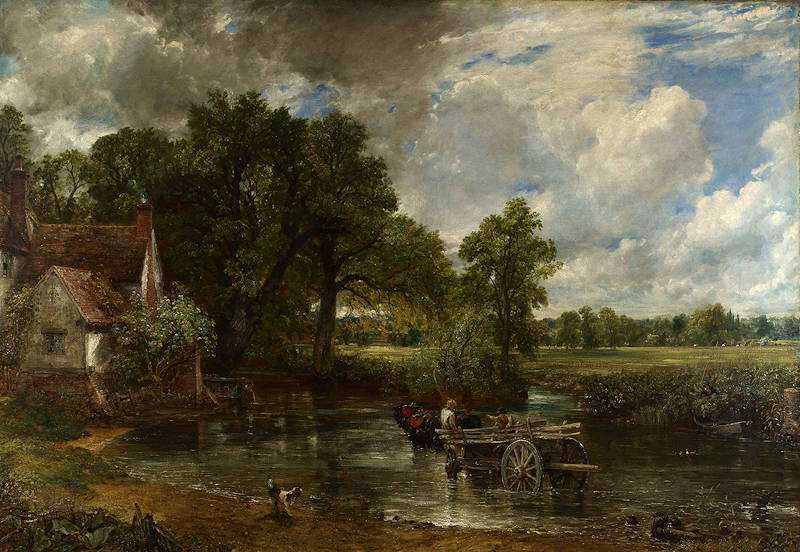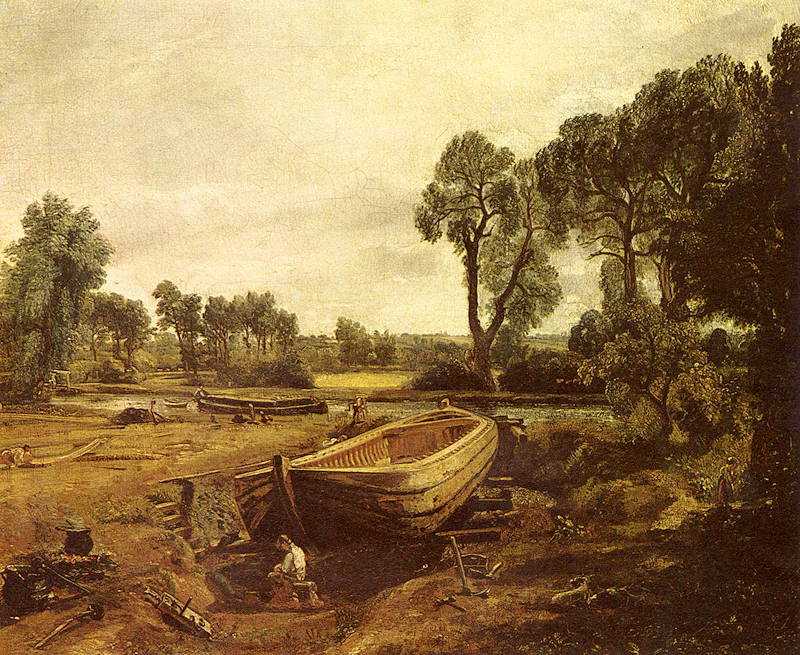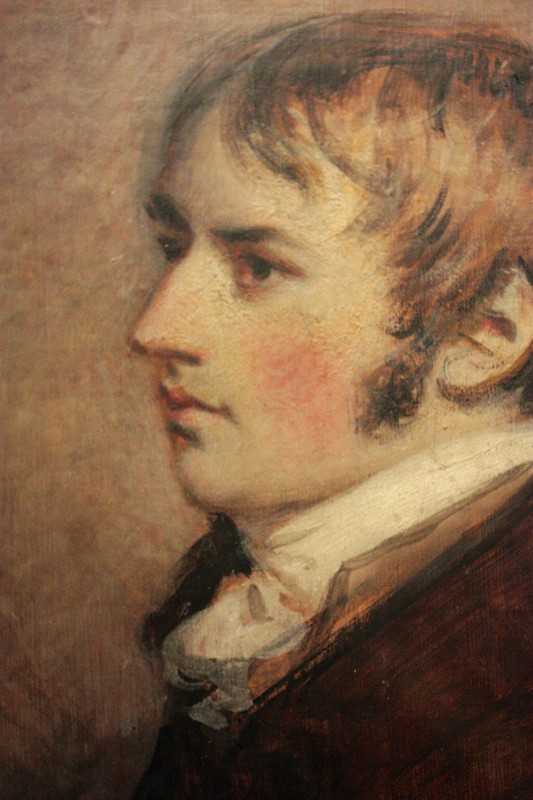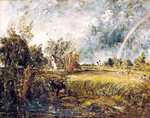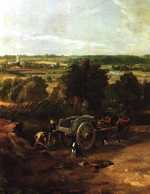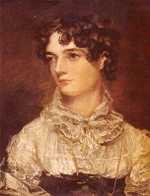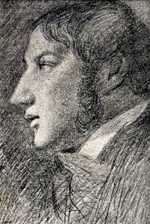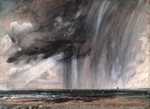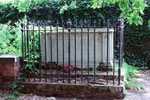1. Constable's early life
The fourth child and second son of Ann and Golding Constable, John Constable was born in Suffolk in 1776.
His mother gave birth in East Bergholt House, a large mansion built by his father. John grew up in the idyllic Suffolk countryside, sketching the scenes he saw around him.
Constable described his early life as a ‘careless boyhood’, which he credited with shaping him into a painter. His fondness for the Suffolk landscape is evident in his early works and the paintings he made throughout his life. He described this attachment to a friend saying “I should paint my own places best; painting with me is but another word for feeling.”
The family lived in East Bergholt for all of Constable’s childhood and he began working in the family business in 1792. Golding Constable was a Suffolk businessman with a number of ventures, including transporting corn and coal on the River Stour and farming over 93 acres of agricultural land in East Bergholt. Ann was the daughter of a London Barrel Manufacturer and she managed the Constable household along with their large domestic workforce. There were no artists in the family.
Golding Constable desperately wanted John to take over his prosperous business when he died. Traditionally, the responsibility would have gone to the oldest son but John’s older brother, also called Golding, had a disability that meant he was not able to take up the position. John struggled to fulfill his father’s wishes, attempting to run the business despite having no interest in the work and little aptitude for trade.
During this time, he continued to pursue his interest in art as a gentleman’s pastime, taking a sketching tour of Norfolk in 1794 and making his first etchings in 1797. Thankfully, after seven difficult years, his younger brother Abram began to show an interest in the family business and John was finally freed from his post. This marked the beginning of fulfilling his dream of becoming a painter.
2. Early career
Though their wealth was derived entirely from trade, Ann Constable thought of her family as ‘gentry’ and sought for her children to have a life of privilege and wealth.
Ann used her social connections to help John in his early painting career and she introduced him to Sir George Beaumont in 1795, whilst he was still working for the family business. This meeting was a turning point for Constable’s interest in art, opening him up to the world of the Old Masters through Beaumont’s collections.
Beaumont, an amateur artist himself, took an interest in Constable’s early sketches. He showed Constable a landscape painting called ‘Hagar and the Angel’ by Claude Lorraine from 1646. This painting had an intense effect on Constable and introduced him to the art of classical landscape painting. Beaumont also had influence in the Royal Academy and Constable was able to enter the Royal Academy schools in 1799, funded by his father.
Ann was concerned that there was no money to be made in landscapes so she encouraged her son to paint portraits. It was quickly realised that he did not have the social skills needed to be a successful portraitist. Nonetheless, he produced around 100 portraits during his life, some of which are beautiful depictions of figures from the provincial middle and upper classes.
From the early 1800s, Constable committed himself to studying outdoors, shaping his painting style as a result. He made tours of the Peak District and the Lake District, following the Romantic aesthetic at the time that favoured mountainous landscapes. As much as he tried, he could not help but prefer his local Suffolk, finding the mountains too lonely for his taste.
In 1816, he married Maria Bicknell and moved to Keppel Street in Bloomsbury. Having a base in London was vital for artists at the time in order to connect with buyers and garner commissions. However, due to Maria’s failing health, he moved the family to Hampstead in 1827, which was outside the city at this time. Constable visited as often as he could and made studies of cloud formations and sketches of the Hampstead landscape, as well as several oil paintings.
Maria’s health continued to worsen and the family began going to Brighton regularly. Here he would paint the coastal landscape, using a similar style to his pastoral scenes. In spite of their efforts, she died of tuberculosis in 1828, leaving Constable heartbroken and “the face of the World [...] totally changed”, as he wrote to his brother Golding.
3. His finest works
Constable first exhibited at the annual Royal Academy exhibition in 1802 with a painting called ‘Landscape’.
Conversely, his second submission, ‘Flatford Mill’, the name of the mill owned by his father and the Constable family’s first house, was rejected. In the midst of his disappointment and anger, Constable became even more determined to become a professional landscape painter.
The Hay Wain
One of his most famous paintings is ‘The Hay Wain’, a six-foot canvas depicting the River Stour with a horse and cart and a quaint white cottage on the riverbank. This was part of Constable’s concerted effort to begin making his paintings a commercial success, an increasingly important issue as the financial needs of his young family grew. This work and six other scenes of the River Stour were some of his greatest achievements, exhibited at the Royal Academy from 1818 to 1825. ‘The Hay Wain’ also won a Gold Medal at the Paris Salon.
‘The Hay Wain’ and other works like ‘The Valley Farm’ from 1835, and ‘Boat-Building’, 1814-15, have made Suffolk famous. The area in which he lived and painted is now known fondly as ‘Constable country’. Constable’s highly individualised style, using broad brushstrokes and loose marks, highlighted the movements of his hand as he painted. This was contrary to the painting convention at the time but leant itself to capturing the beauty and vitality of his landscapes, as well as adding a human dimension to the works.
Salisbury Cathedral
The painting widely considered to be his masterpiece is ‘Salisbury Cathedral from the Meadows’ painted in 1831. The cathedral he depicts is lit by a rainbow, shown in a realistic fashion notwithstanding the impossibility of it occurring in the skies in the rest of the scene. The rainbow is thought to have been symbolic, finishing at the house of his friend Dr John Fisher who helped him following the death of Maria in 1828. When he later commissioned an engraving of the piece, he described the rainbow as “tender – and elegant – evanescent and lovely – in the highest degree”.
This was not the only time Constable painted rainbows into his compositions. As a Romantic painter, Constable used the rainbow as an icon for the beautiful but transient nature of life. This interpretation was in keeping with its popularity in Romanticism at the time and his later watercolours frequently depicted rainbow motifs, including ‘Stonehenge’ painted in 1835.
4. Constable's legacy
Constable died suddenly on 31st March 1837 inBloomsburyand was buried next to Maria in St John’s churchyard, Hampstead.
After his death, his daughter, Isabel, donated the works she had inherited to the Victoria and Albert museum in London which consisted of 297 drawings and watercolours and 92 oil works, as well as three easel paintings and three sketchbooks.
Unlike many of his contemporaries, most famously Turner, Constable did not receive recognition or success in the Royal Academy until much later in his life at the age of 52. He did not follow fashions and norms at the time, choosing to combine the compositions of the old masters with a focus on naturalism and portrayals of ordinary life. This merging of ideas and style was very unpopular in Britain.
However, across the channel in France, Constable’s work was highly praised and sold well. French artists such as Eugène Delacroix were amazed by his paintings, so much so that Delacroix was inspired to repaint the background of one of his own works to mimic Constable’s technique of capturing light and colour. Similarly, Constable moved a host of French painters to leave Paris in search of natural subjects and pastoral scenes. This became known as the Barbizon school, named after one of the villages that became a popular location for artists including Theodore Rousseau and Jean-Baptiste Camille Corot.
Constable’s individual style can now be understood as a transformative step in landscape painting that had profound effects on the genre. Similarly, he has been credited with inspiring British impressionism, especially in the works of Philip Wilson Steer who also sought to capture everyday life in England. Most notably, Constable was instrumental in shaping the Romantic vision of the English landscape and inspiring a fondness for the countryside that still endures today.
